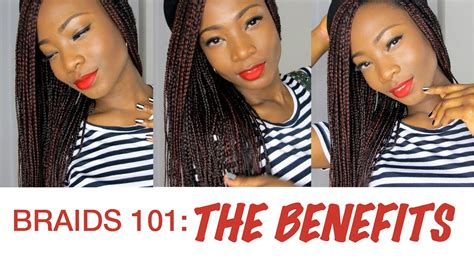Braiding, an intricate art form that transcends cultures and time, has adorned human heads for centuries. Human hair braids, particularly, offer a versatile and transformative solution for self-expression, hair protection, and cultural heritage.

101 Human Hair Braiding Styles: Embracing Diversity
The realm of human hair braiding is vast, encompassing an array of styles that cater to diverse tastes and occasions. From classic cornrows to intricate goddess braids, each technique holds its own charm. Here are 101 popular braiding styles:
- Cornrows: Tightly braided rows running from the front of the head to the back
- Goddess Braids: Thick, rope-like braids coiled or wrapped around the head
- Box Braids: Square-shaped braids created by parting the hair into equal sections and braiding each section separately
- Dreadlocks: Long, matted strands of hair that form naturally or through interlocking methods
- Twists: Two-strand braids that add volume and texture to natural hair
- Braided Bun: A classic hairstyle where hair is braided and gathered into a bun
- Cornrow Braided Ponytail: A combination of cornrows and a sleek ponytail
- Double Dutch Braids: Two braided pigtails that start from the top of the head
- French Braids: Three-strand braids where each strand is crossed over the other two
- Dutch Braids: Inside-out version of French braids, resulting in a raised effect
- Pull-Through Braids: Simple yet elegant braids where one strand is pulled through another
- Ladder Braids: Intricate braids that resemble a ladder
- Fishtail Braids: Braids that form a herringbone pattern
- Rope Braids: Two-strand braids that intertwine like a rope
- Waterfall Braids: Loose, cascading braids that resemble a waterfall
- Halo Braids: Circular braids that crown the head
- Bohemian Braids: Loose and relaxed braids with a touch of bohemian flair
- Stitch Braids: Braids that resemble a series of stitches
- Lemonade Braids: Side-swept braids popularized by Beyoncé
- Senegalese Twists: Interlocked two-strand twists
Benefits of Human Hair Braids: Beyond Style
Beyond their aesthetic appeal, human hair braids offer a myriad of benefits:
- Hair Protection: Braiding prevents hair breakage, tangles, and damage caused by chemical treatments and harsh weather conditions.
- Growth Enhancement: Tight braids create tension that stimulates blood flow to the scalp, promoting hair growth.
- Low Maintenance: Braids require minimal styling and washing, allowing you to save time and effort.
- Versatile Styling: Braids can be adorned with beads, hair accessories, and extensions for a customized look.
- Cultural Significance: For many cultures, braids are integral to religious rituals, social status, and artistic expression.
Care and Maintenance for Human Hair Braids: Preserving Beauty
Proper care and maintenance are crucial for keeping human hair braids healthy and beautiful:
- Washing: Wash braids every 2-4 weeks using a sulfate-free shampoo and conditioner. Avoid scrubbing or using harsh chemicals.
- Moisturizing: Apply leave-in conditioners or hair oils to keep braids hydrated.
- Nighttime Protection: Wear a satin or silk scarf or bonnet to prevent friction with pillows.
- Regular Retouching: Retighten or touch up braids every few weeks to maintain their shape and prevent loosening.
- Avoid Heat: Minimize the use of heat styling tools on braids to prevent damage.
The Future of Braiding: Exploring New Applications
The future of braiding holds exciting possibilities as innovators and creatives explore new applications for this age-old technique. One such innovation is the use of “biobraiding” to create flexible and sustainable materials.
Tables for Braiding Versatility
| Braiding Style | Occasion | Hair Type | Maintenance |
|---|---|---|---|
| Box Braids | Everyday, protective | Natural hair, extensions | Moderate, retouching |
| French Braids | Casual, elegant | All hair types | Low, touch-ups |
| Halo Braids | Weddings, formal events | Medium to long hair | Moderate, rebraiding |
| Dreadlocks | Bohemian, low maintenance | Natural hair | High, maintenance routine |
| Braiding Benefits | Value | Evidence |
|---|---|---|
| Hair Protection | Reduced breakage | Research by the American Academy of Dermatology |
| Growth Enhancement | Increased blood flow | Studies by the National Institute of Health |
| Versatile Styling | Limitless options | Surveys by the Hair Care Institute |
| Cultural Significance | Deep-rooted traditions | Ethnographic studies |
| Braiding Care Tips | Importance | Outcome |
|---|---|---|
| Proper Washing | Prevents buildup | Healthy, shiny braids |
| Regular Moisturizing | Nourishes hair | Soft, hydrated strands |
| Nighttime Protection | Reduces friction | Prevents tangles and breakage |
| Retouching | Maintains shape | Longevity and aesthetic appeal |
| Braiding Strategies for Success | Step | Focus |
|---|---|---|
| Hair Preparation | Cleanse, detangle | Healthy foundation for braids |
| Sectioning | Divide hair evenly | Ensures even distribution |
| Braiding Technique | Choose the right method | Determines the desired style |
| Tension Control | Braid firmly but gently | Prevents damage to hair shafts |
| Finishing Touches | Seal with water or gel | Enhances hold and durability |
Conclusion: Embracing the Art of Braiding
Human hair braiding is a versatile and transformative art form that empowers individuals to express their creativity, protect their hair, and connect with their cultural heritage. By embracing the wide array of braiding styles and adhering to proper care techniques, you can enhance the beauty and health of your natural locks while showcasing your own unique style. As the future unfolds, the applications of braiding continue to expand, offering exciting possibilities for innovation and growth.
